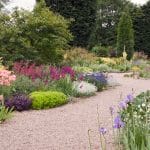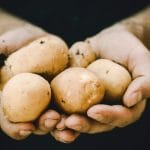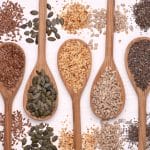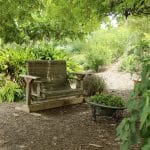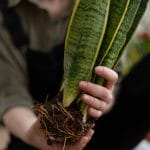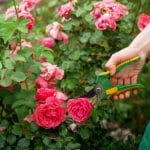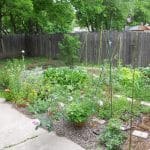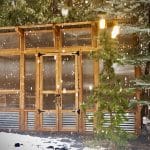Garden Companion Planting
Planting
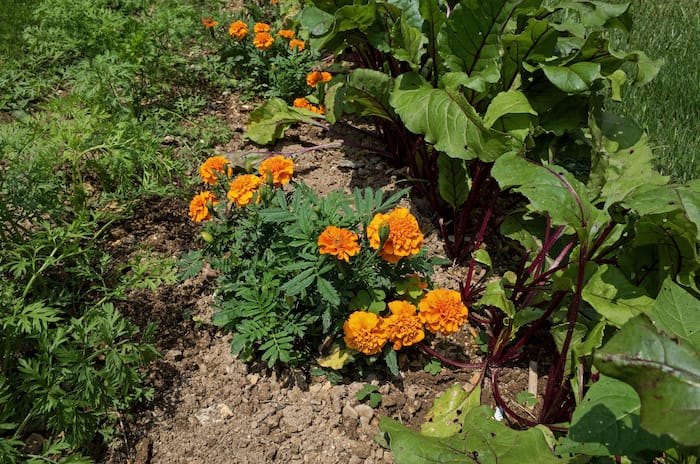
Companion planting is a great way to grow a healthier garden. By placing the right plants together, you can reduce the presence of pests, attract pollinators, and even enhance flavor.
This guide shares the benefits, planting times, soil and watering tips, and a detailed chart of vegetables, herbs, and flowers that grow best in good company—plus a few honest lessons I’ve learned in my own garden along the way. That’s the heart of companion planting: letting plants help each other out. It’s not perfect, and it won’t stop every bug from marching in, but it sure tips the odds in your favor.
Why Plant Friendships Matter
- Pest protection → Herbs and flowers with strong scents confuse the bugs. A row of chives can throw off a carrot fly in no time.
- Pollinators galore → Toss in some zinnias or calendula, and you’ll see bees working your vegetables like a buffet line.
- Soil smarts → Peas and beans feed the ground with nitrogen, which hungry crops like corn and tomatoes lap right up.
- Water sharing → Deep-rooted crops like carrots sip from below, leaving moisture up top for shallow-rooted lettuce.
- Steady harvests → Quick growers like radishes fill the gap while slower crops, like peppers, settle in.
It is less like science experiments and more like matchmaking. Who balances who out? Who shares nicely? That’s your answer.
Timing, Soil, and Watering Basics
Here’s the part most charts forget to tell you: when and how to set things up.
- Planting times → Cool-weather friends (lettuce, peas, spinach, carrots) should stick together in spring and fall. Warm-weather crops (such as tomatoes, cucumbers, peppers, and beans) wait until the soil is warm and good.
- Soil prep → Add compost each season. Heavy feeders, such as squash and corn, require the richest beds; herbs can thrive with leaner soil.
- Watering → Group plants by thirst. Basil, cucumbers, and lettuce like steady moisture. Rosemary, Thyme, and sage? They’d rather dry out between drinks.
- Space to breathe → Plant in clusters instead of tight rows, but don’t cram them. Good airflow helps keep mildew and pests at bay.
Herb Allies
I never tuck herbs away in their own bed—they belong right in the mix.
- Basil → Loves tomatoes and peppers. Plant it after the soil has warmed, keep it watered, and watch the flavor magic unfold.
- Chives → Plant in spring. They thrive in moist soil and help keep carrot flies away.
- Dill → Scatter in springtime; let it flower for pollinators. Cukes and cabbage love it.
- Thyme → Tucks in low and tough, a natural bug repellent for brassicas. Dry soil suits it best.
- Lovage → Tall, celery-flavored, and always buzzing with pollinators. Give it rich soil and steady drinks.
- Summer Sarepel → Best frienth beans, keeping beetles at bay. Sow after frost.
Flowers That Earn Their Keep
Pretty, yes, but every one of these flowers has a job to do:
- Calendula → Early spring bloomer, draws in ladybugs and hoverflies.
- Marigold → The classic bug deterrent, happy in most soils once frost is past.
- Nasturtium → Poor soil, little water, and it still thrives. Acts like a magnet for aphids—keeping them off your veggies.
- Phacelia → Early sowing in cool soil. Bees love it.
- Zinnias → Bloom all summer and pull in beneficial wasps.
- Alyssum → Sweet little groundcover, edges beds and feeds pollinators.
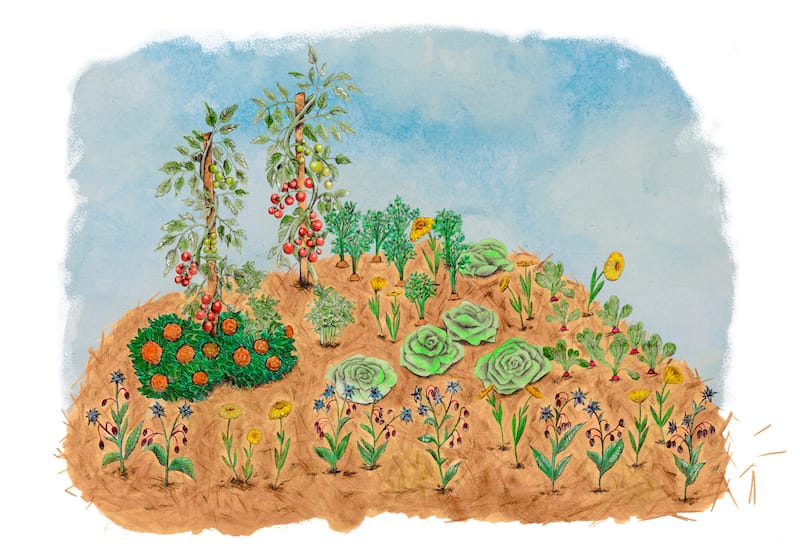
Veggie Companion Guide (With Real-World Details)
Planting times, soil & watering needs, plus companion picks that actually pull their weight.
| Crop | Best Friends | Planting Time | Soil & Water | Why It Works |
|---|---|---|---|---|
| Tomato | Basil Marigold Borage Lettuce | After frost; warm soil | Compost-rich; steady moisture | Basil boosts flavor; marigolds deter pests; lettuce uses shade. |
| Carrot | Chives Onions Rosemary Radish | Early spring (cool soil) | Loose/sandy; even moisture | Alliums mask carrot scent; radish loosens topsoil. |
| Cucumber | Dill Nasturtium Sunflowers | Late spring (after frost) | Moist, fertile; consistent water | Dill brings pollinators; nasturtium traps aphids; sunflowers offer light shade/structure. |
| Peppers | Basil Spinach Carrots | After frost; warm nights | Fertile; steady moisture | Basil deters mites; spinach fits under canopy; carrots share space well. |
| Beans | Summer Savory Radish Corn Salad (mâche) | Warm soil (late spring) | Average soil; moderate water | Fix nitrogen; savory deters beetles; radish aerates top layer. |
| Lettuce | Radish Carrot Strawberries | Cool seasons (spring/fall) | Moist; compost-fed | Radish loosens soil; strawberries provide light shade and groundcover. |
| Broccoli | Chamomile Beets Celery | Early spring or fall | Fertile; steady moisture | Herbs confuse moths; chamomile is said to support vigor. |
| Potatoes | Cilantro Beans Alyssum | Early spring | Loose, rich; even moisture | Cilantro discourages beetles; beans enrich soil; alyssum feeds beneficials. |
| Squash | Nasturtium Calendula Oregano | After frost; warm soil | Rich; steady moisture | Trap crops pull pests; oregano helps repel insects. |
| Spinach | Peas Oregano Strawberries | Cool seasons | Moist; nitrogen-friendly soil | Peas add nitrogen; oregano deters pests; strawberries share microclimate. |
| Onions | Carrots Beets Lettuce | Early spring | Well-drained; moderate water | Strong scent helps mask neighbors; shallow roots fit between crops. |
| Garlic | Beets Cabbage Tomatoes | Plant in fall; harvest summer | Loose, compost-rich; moderate water | Repels aphids and may reduce fungal issues nearby. |
| Eggplant | Thyme Beans Spinach | After frost; warm soil | Fertile; steady moisture | Thyme helps with moth pressure; beans support soil; spinach covers ground. |
| Melons | Radish Nasturtium Zinnias | Late spring (warm soil) | Sandy, well-drained; steady water | Radish discourages beetles; flowers bring pollinators. |
| Strawberries | Borage Spinach Chives | Early spring (or fall in mild zones) | Moist; compost-rich | Herbs deter pests; spinach acts as living mulch. |
| Cabbage | Dill Chamomile Sage | Early spring | Fertile; consistent moisture | Herbs help confuse moths and beetles targeting brassicas. |
Companion Planting Results
Companion planting isn’t about memorizing charts—it’s about observation. I’ve had pairings flop and others flourish. Nasturtiums under cucumbers? Brilliant. Beans next to garlic? Disaster.
The fun is in experimenting. Each season, I jot down what worked and what didn’t, and then tweak it for the next time. Over the years, I’ve built my own “garden playbook,” and I swear by it more than any book or chart.
So start small: one bed, a few pairings. Watch, learn, and let the garden teach you.
Companion Planting FAQ
Does companion planting really work?
Yes, but think of it as prevention, not cure. It reduces pest pressure and can improve growth, but you’ll still need to keep an eye out for problems.
What’s the easiest companion combo for beginners?
Start with basil and tomatoes, or marigolds around cucumbers and squash. They’re low-risk and usually very effective.
Can I companion plant in containers?
Absolutely. Try tomatoes with basil in a large pot, or peppers with lettuce tucked underneath. Just match water and soil needs.
Do I need perfect soil for companion planting?
No. Healthy soil helps, but many companions (like nasturtiums) thrive even in poor soil. Compost and mulch go a long way.
Which plants should not be planted together?
Beans and onions don’t play well together, and fennel is best grown alone since it can stunt nearby crops.
How close do companions need to be?
Close enough to share benefits—usually within 1–2 feet—but not so close that airflow is blocked. Balance is key.
Share this post
All categories
More From The Garden
Disclosure: This post may contain affiliate links. That means if you click and buy, The Bright Garden may earn a small commission, at no extra cost to you. We only recommend products we’ve vetted and believe will benefit our readers.

